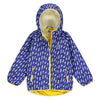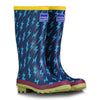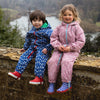
KS2 Science - Earth and Space
Learning Objective: Angles
Pupils should be taught to use the idea of the Earth’s rotation to explain day and night and the apparent movement of the sun across the sky.
Resources
Chalk, open space – playground is perfect, a bright summer's day!
‘What Makes Day and Night’ by F Brankley
Introduction
Open a discussion with the class about what happens to the sun during the day. Model questions such as “Does it move around the sky” “Are we moving?”. Talk about how Sunlight shifts over the course of a day, hitting the Earth directly around noon, from the east in the morning and from the west later in the afternoon and early evening. For centuries, people have used sundials to tell time based on sunlight’s changing directions and its effects on shadows. At different times of the day, your shadow gets longer and shorter, or may disappear. Tell the children that you can tell the time based on your shadow’s current length.
Activity
This activity is easily done in the garden or on the pavement with some parental improvisation.
Start as early in the day as you can. Take the children outside, and divide the class in to 5or 6 groups. Ask each group to stand In different areas of the playground. Each group should make a large circle, and ask one of each group to stand in the centre, and mark the centre point with the chalk. Each group should have some chalk, and one person should draw around the shadow of the child in the centre. Ask another child to write the time above the shadow. Take some pictures of the children doing this. Every hour, take the children outside and repeat this. At the end of the day, take the group out for the final time, and ask the children to observe what has happened, and discuss this.
Extension
Discuss how the Sun moves across the sky during the day? Talk to the children how it rises in the East and reaches its highest point in the sky around lunchtime. Then, it descends, setting in the West. Although it is hard to believe, it is actually we on Earth who are travelling—not the Sun! Ask the children to mark East and West on the playground. The next day, take the children out again and observe where the sun is, and use your human sundial to tell the time!









